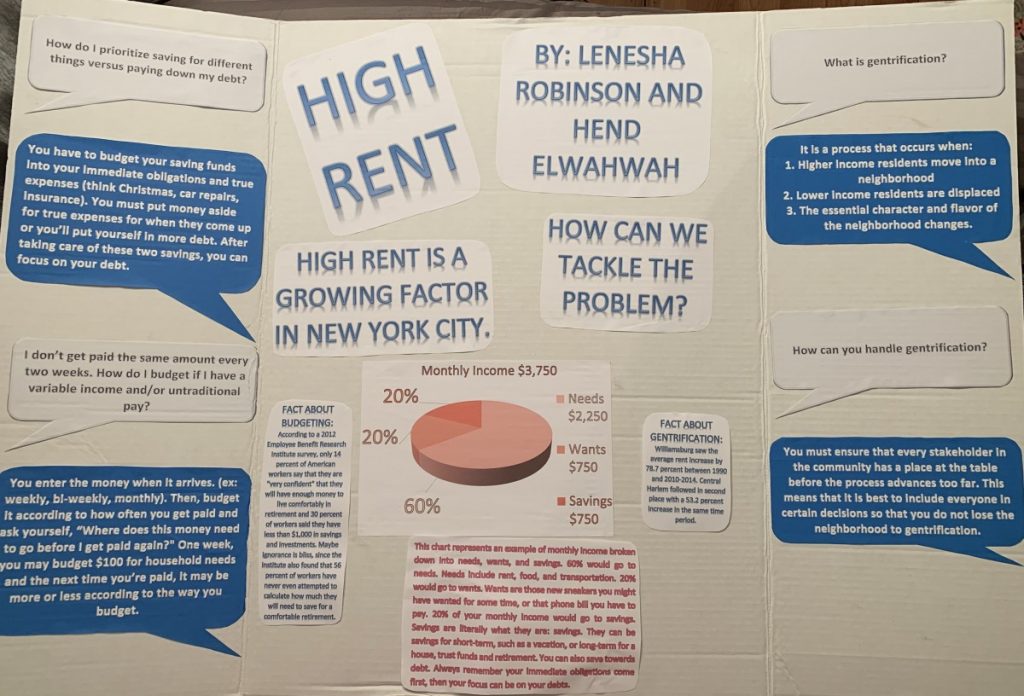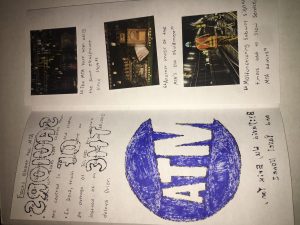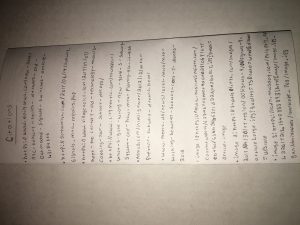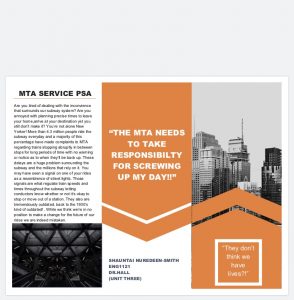https://docs.google.com/document/d/1J_so4_BnPGeGxx1W9zKyYc-ZkPOZEIMQ9kJOb8HxU6w/edit?usp=sharing
Noise Pollution Effects on Health Final Draft
Latrell Greene
ENG 1121
Dr. Hall
4/4/2019
Noise Pollution Effects on Health
Dear Mayor de Blasio,
Noise pollution being ever-present in big cities, like NYC, can lead to health effects that range from levels of both physical health effects, to psychological. A multitude of studies have been conducted on the negative effects of noise pollution on the human mind and body, which goes to show how prominent the problem is. As a result, the purpose of this letter is to persuade you to consider solutions to get New York City, one of the most noise polluted cities in the nation, to achieve a more considerate and moderate noise level, especially regarding our subway system.
New York City is home to a subway system that can expose “commuters to noise as loud as a jet engine”. In an article by The Guardian, author Olga Oksman stated that in Time Square’s busy subway station, the noise levels clocked in at 80 decibels to 96 decibels when express trains pass through the station, and up to a level of 101.9 decibels at Manhattan’s Upper West Side station. A study 2011 study from the German Department of Environmental Health also stated the fact that “Noise from transportation is by far the most widespread source of noise exposure, causing most annoyance and public health concerns.” It can become very clear after analyzing this problem by taking a step back and observing just how loud the subway can get, as well as how so many people who commute to work and to school everyday by subway can be, and are affected by this.
Though the subway is arguably the loudest source of noise, it isn’t the only notable source of noise pollution. Noise pollution is also prevalent in busy streets, and there is often a lot of construction around the city, thus the noise is very spread out in the city. Although the noise wouldn’t be exactly ear-splitting, it can still have an effect internally, on a psychological level, which could connect to problems with blood pressure and heart rate. A study from 1995 by Journal of Hypertension featured conducted research on the effects of urban noise pollution on blood pressure and heart rate in preschool children, and concluded that “the group mean blood pressure and heart rate values of preschool children from quiet areas contrasted with readings for those from noisy environments. This indicates a positive association between the level of traffic noise and a possibly increased role of sympathetic cardiovascular regulatory influence.”
The effects that noise pollution can have on people according to a 2000 study, which conducted research on the effects of noise pollution on humans, has a range including: “Noise Induced Hearing Impairment”, “Stress Related Health Effects”, “Sleep Disturbance” and “Effects on [Cognitive] Performance”.
A possible solution to the subway noise level problem could be an effort to update the subway system, and the practicality as well as the need for it is evident by a comparison between our subway system and others, like the bullet train in Japan. Even by taking steps toward it over a period of years would the outcome be significant.
SONYC Power
“Living in NYC: 101”
Final Draft
Final draft unit 3
Final Draft
Dear MTA Board Members,
For starters, I would like to thank you all for what you’re doing for public transportation and allowing there to even be an alternative for people to commute. But it’s honestly not enough. As a train rider, I’m speaking on behalf of myself and other passengers I witness who are also fed up with the MTA when I say that train delays have become major issues. Train delays take place during any time the subways are in service. They last from as short as five minutes to as long as forty five minutes based on my experiences. But I’m pretty sure that others have experienced worse. During service hours when a train all of a sudden stops moving, most people boarding the train start sucking their teeth or shaking their heads right before the conductor states, “we’re experiencing delays due to signal malfunctions, we’ll be moving shortly, thank you for your patience.” Do we really end up moving shortly though? No. Sometimes we do but often times we don’t and that is not okay. There is nothing more disappointing than hearing that the train is delayed when you have somewhere you really need to be. It also annoys some passengers that the MTA never explains what signal failures are, why they go wrong, and things that can be done to avoid them. They just stop the train, give an excuse about signals, and expect passengers to comply with it.
After doing research of my own, I found out that just like roads, railways have signals which are traffic light devices that inform train drivers if it’s safe to proceed. Signals are positioned at the beginning of each track and divided into sections to ensure that trains don’t collide. In a particular section, only one train should be in service. Sometimes these signals breakdown and the signal turns red causing train drivers to stop driving. Signals turn red because of problems with track circuits and axle counters. If anything goes wrong with these devices, its not safe for a train to proceed. And if one train doesn’t proceed, it will hold up the train behind it which will cause train traffic. These devices fail because the proper maintenance that tracks need to function efficiently is not being provided enough. On top of that, recent studies found out that “For all intents and purposes, the subway uses the same signaling system that was installed when the first subway line opened in 1904.” (Gordon 1). So basically, the subway uses the same century old technology, more specifically signaling system which is a key factor as to why trains experience delays. If passengers have to deal with the annoyance of train delays due to signal problems, they should at least know the reasons why these signals fail. The way the system operates hasn’t appropriately changed since it’s establishment. This results in trains being held in stations longer than intended. And if trains don’t proceed on their proper schedules, things could get hectic really quickly. Things such as electrical supply faults, track circuit failures, broken rail joints, blow signal lamps, or train stop faults which are referred to as these signal problems could all be prevented if more track work gets done.
A few suggestions gathered that may help prevent delays include meetings that should be held with railway engineers discussing steps that need to be taken to ensure that proper track maintenance takes place and engineers that actually live within the borough they work for should be the ones being hired. This way they can get to their job destinations quicker and develop solutions to technical problems quicker. New products to enhance track duration should also be open for discussion and development. Rumor has it that the subway fare is going up soon, if this is true people shouldn’t have to pay more for commutes that are twice as long than usual. It’s just simply unfair! Thank you for your time.
Sincerely,
Ife Ajayi
Noise Pollution Health Effects Draft
Latrell Greene
ENG 1121
Dr. Hall
4/4/2019
Noise Pollution Effects on Health
Dear Mayor de Blasio,
Noise pollution being ever-present in big cities, like NYC, can lead to health effects that range from levels of both physical health effects, to psychological. A multitude of studies have been conducted on the effects of noise pollution on the human mind and body, which goes to show how prominent the problem is, so this letter is written to persuade you to consider solutions to get the city to have a more considerate and moderate noise level, especially in our subway system.
New York City is home to a subway system that can expose “commuters to noise as loud as a jet engine”. In an article by The Guardian, author Olga Oksman stated that in Time Square’s busy subway station, the noise levels clocked in at 80 decibels to 96 decibels when express trains pass through the station, and up to a level of 101.9 decibels at Manhattan’s Upper West Side station. A study 2011 study from the German Department of Environmental Health also stated the fact that “Noise from transportation is by far the most widespread source of noise exposure, causing most annoyance and public health concerns.”
Though the subway is arguably the loudest source of noise, it isn’t the only source of noise pollution. Noise pollution is also prevalent in busy streets, and there is often a lot of construction around the city, thus the noise is very spread out in the city. Although the noise wouldn’t be exactly ear-splitting, it can still have an effect internally, on a psychological level, which could connect to problems with blood pressure and heart rate. A study from 1995 by Journal of Hypertension featured conducted research on the effects of urban noise pollution on blood pressure and heart rate in preschool children, and concluded that “the group mean blood pressure and heart rate values of preschool children from quiet areas contrasted with readings for those from noisy environments. This indicates a positive association between the level of traffic noise and a possibly increased role of sympathetic cardiovascular regulatory influence. ”
The effects that noise pollution can have on people according to a 2000 study conducted research on the effects of noise pollution on humans, can have a range including: “Noise Induced Hearing Impairment”, “Stress Related Health Effects”, “Sleep Disturbance” and “Effects on [Cognitive] Performance”.
Possible solutions to the problem could be an effort to update the subway system, as evident by a comparison between our subway system and others, like the bullet train in Japan. Even by taking steps toward it over a period of years would the outcome be significant.
Sources
- https://www.theguardian.com/lifeandstyle/2016/aug/31/new-york-city-subway-trains-noise-pollution-jet-engine
- http://www.noiseandhealth.org/article.asp?issn=1463-1741;year=2011;volume=13;issue=52;spage=201;epage=204;aulast=Babisc
- https://ehp.niehs.nih.gov/cms/attachment/2122895a-7860-45ef-8a1e-c7b2ccb08c1b/ehp.00108s1123.pdf
- https://www.researchgate.net/profile/Valeria_Regecova2/publication/15570548_Effects_of_urban_noise_pollution_on_blood_pressure_and_heart_rate_in_preschool_children/links/5a51575aa6fdcc769001ff4a/Effects-of-urban-noise-pollution-on-blood-pressure-and-heart-rate-in-preschool-children.pdf
Brochure draft
Draft
Dear MTA Board Members,
For starters, I would like to thank you all for what you’re doing for public transportation and allowing there to even be an alternative for people to commute. But it’s honestly not enough. As a train rider, I’m speaking on behalf of myself and other passengers I witness who are also fed up with the MTA when I say that train delays have become major issues. Train delays take place during any time the subways are in service. They last from as short as five minutes to as long as forty five minutes based on my experiences. But I’m pretty sure that others have experienced worse. During service hours when a train all of a sudden stops moving, most people boarding the train start sucking their teeth or shaking their heads right before the conductor states, “we’re experiencing delays due to signal malfunctions, we’ll be moving shortly, thank you for your patience.” Do we really end up moving shortly though? No. Sometimes we do but often times we don’t and that is not okay. There is nothing more disappointing than hearing that the train is delayed when you have somewhere you really need to be. It also annoys some passengers that the MTA never explains what signal failures are, why they go wrong, and things that can be done to avoid them. They just stop the train, give an excuse about signals, and expect passengers to comply with it.
I did some research of my own and found out that just like roads, railways have signals which are traffic light devices that inform train drivers if it’s safe to proceed. Signals are positioned at the beginning of each track divided into sections to ensure that trains don’t collide. In a particular section, only one train should be in service. Sometimes these signals breakdown and the signal turns red causing train drivers to stop driving. Signals turn red because of problems with track circuits and axle counters. If anything goes wrong with these devices, its not safe for a train to proceed. And if one train doesn’t proceed, it will hold up the train behind it which will cause train traffic. These devices fail because the proper maintenance that tracks need to function efficiently is not being provided enough. On top of that, the subway uses the same century old technology, more specifically signaling system that was installed years ago. If passengers have to deal with the annoyance of train delays due to signal problems, they should at least know the reasons why these signals fail. The way the system operates hasn’t appropriately changed since it’s establishment. This results in trains being held in stations longer than intended. And if trains don’t proceed on their proper schedules, things could get hectic really quickly. Things such as electrical supply faults, track circuit failures, broken rail joints, blow signal lamps, or train stop faults which are referred to as these signal problems could all be prevented if more track work gets done.
As a suggestion, meetings should be held with railway engineers discussing steps that need to be taken to ensure that proper track maintenance takes place and engineers that actually live within the borough they work for should be the ones being hired. This way they can get to their job destinations quicker and develop solutions to technical problems quicker. New products to enhance track duration should also be open for discussion and development. Rumor has it that the subway fare is going up soon, if this is true people shouldn’t have to pay more for commutes that are twice as long than usual. It’s just simply unfair! Thank you for your time.
Sincerely,
Ife Ajayi











